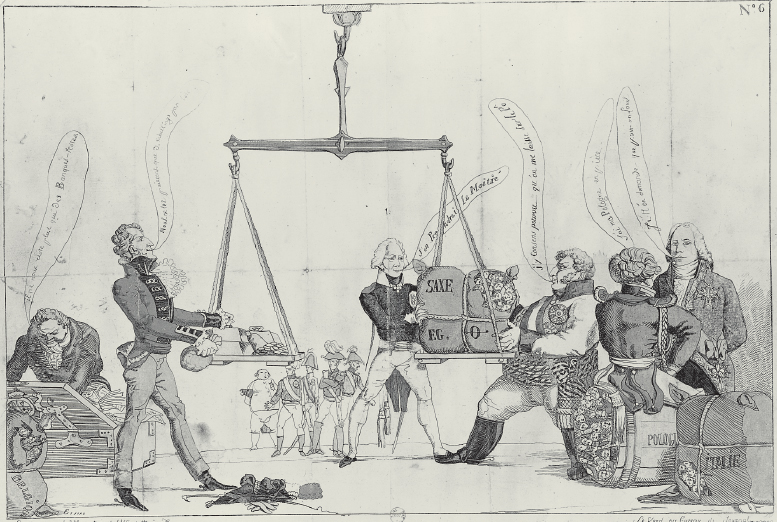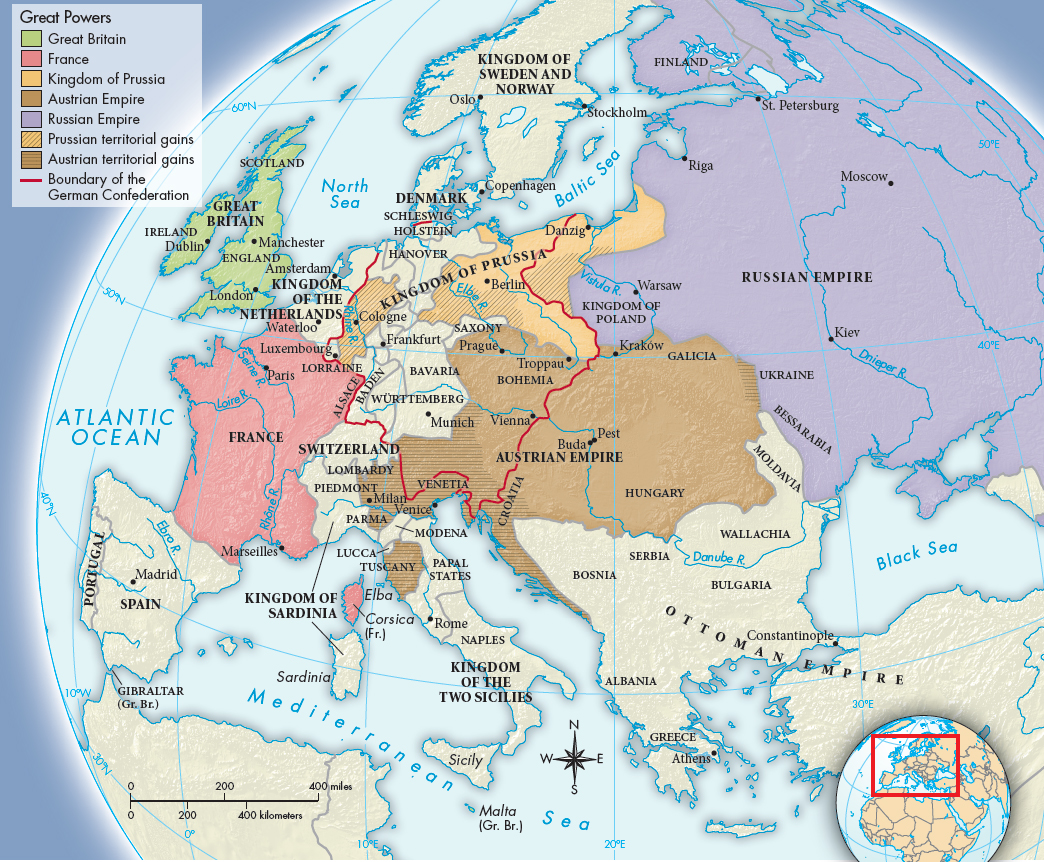How was peace restored and maintained after 1815?
AAFTER FINALLY DEFEATING NAPOLEON, the conservative, aristocratic monarchies of Russia, Prussia, Austria, and Great Britain — known as the Quadruple Alliance — reaffirmed their determination to hold France in line. Other international questions remained unresolved. Even before Napoleon’s final defeat, the allies had agreed to meet to fashion a general peace accord in 1814 at the Congress of Vienna. By carefully managing the balance of power and embracing conservative restoration, they brokered an agreement that contributed to fifty years of peace in Europe (Map 21.1).

Adjusting the BalanceThis French cartoon captures the essence of how the educated public thought about the balance-

MAP 21.1 Europe in 1815In 1815, Europe contained many different states, but after the defeat of Napoleon, international politics was dominated by the five Great Powers: Russia, Prussia, Austria, Great Britain, and France. (The number rises to six if one includes the Ottoman Empire.)> MAPPING THE PASTANALYZING THE MAP: Trace the political boundaries of each Great Power, and compare their geographical strengths and weaknesses. What territories did Prussia and Austria gain as a result of the war with Napoleon?
CONNECTIONS: How did Prussia’s and Austria’s territorial gains contribute to the balance of power established at the Congress of Vienna? What other factors enabled the Great Powers to achieve such a long-
CONNECTIONS: How did Prussia’s and Austria’s territorial gains contribute to the balance of power established at the Congress of Vienna? What other factors enabled the Great Powers to achieve such a long-